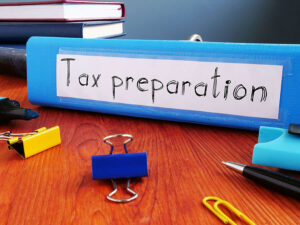
Since it is a contra asset account, this allowance account must have a credit balance (which is contrary to the debit balances found in asset accounts). The Allowance for Doubtful Accounts is directly related to the asset account entitled Accounts Receivable. Therefore, the net amount of the accounts receivable that is expected to turn to cash is $38,000. Contra revenue is a general ledger account with a debit balance that reduces the normal credit balance of a standard revenue account to present the net value of sales generated by a business on its income statement. Examples of revenue contra accounts are Sales Discounts, Returns and Allowances. Discount on Notes Receivable is a contra asset account with a credit balance that reduces the normal debit balance of its parent Notes Receivable asset account in order to present the net value of receivables on a company’s balance sheet.
Everything You Need To Master Financial Modeling
- The net balance of the accounts shows the net value of the purchases made by the business for the accounting period.
- If a contra account is not used, it can be difficult to determine historical costs, which can make tax preparation more difficult and time-consuming.
- Fortunately, the seat vendor offered an early payment discount of 5%, meaning that when Show-Fleur paid off its full credit note within the first 30 days, it recouped $30 thousand in savings.
- Instead, you need to record this value gap, and a contra asset account serves that purpose.
- Whereas assets normally have positive debit balances, contra assets, though still reported along with other assets, have an opposite type of natural balance.
Accruing tax liabilities in accounting involves recognizing and recording taxes that a company owes but has not yet paid. GAAP, the allowance for doubtful accounts represents management’s estimate of the percentage of “uncollectible” accounts receivable (i.e. the credit purchases from customers that are not expected to be paid). The net amount – i.e. the difference between the account balance post-adjustment of the contra account balance – represents the book value shown on the balance sheet. The allowance method of accounting allows a company to estimate what amount is reasonable to book into the contra account.
What Is a Contra Liability Account

The contra accounts will be grouped in the same category on the balance sheet or income statement as their related accounts. Generally speaking, the use of contra accounts is to ensure their related accounts stay clean and to keep track of historical cost easier. A contra revenue represents any deductions or offsets that need to be removed from gross revenue to provide a clearer understanding of actual income — such as in the example just provided.
Taking a closer look at contra asset accounts
For example, we need to keep the face value of a bonds payable and the premium amount in separate ledger accounts even though both have credit balances. A separate account used in such a situation is sometimes called a adjunct account. A contra expense account is an account used to reduce the amount of an expense without changing the balance in the main expense account. Examples of contra expense accounts include Purchase Returns, Purchase Discounts, and Advertising Reimbursements. Home Depot reports net receivables and net property and equipment, implying that both are reduced by contra assets. We’ll need to dig into the footnotes to find out what the contra accounts are.
Asset Contra Account

In reality, the actual number of company discounts came closer to $5 thousand. In this article, we’re going on a deep dive into what exactly a contra account is, how contra accounts work, why and how you would use contra accounts and more. The purpose of the Sales Returns account is to track the reduction in the value of the revenue while preserving the original amount of sales revenue. The purpose of the Owner’s Withdrawal account is to track the amounts taken out of the business without impacting the balance of the original equity account. Home Depot reports that returns are estimated at the time of the sale based on historic returns numbers.
List of common contra accounts
Consider an asset account, where the values are listed as debits, and the account itself will present a positive total. Conversely, for a contra asset account like depreciation, you would list all entries as a credit, carrying a negative total balance for the overall account. Contra accounts exist when the account reported on the balance sheet needs to be reduced by a different account to show its true value. For example, GAAP accounting (or generally accepted accounting principles) requires fixed assets to be reported at cost on the balance sheet, but, over time, that value depreciates as the assets are used. The balance sheet will show a gross fixed assets value, a contra account value for accumulated depreciation, and a net value.

How are contra accounts recorded?
- The accounts normally have a credit balance and in use are offset against the purchases account which is normally a debit balance.
- Namely, within a ledger, each account is intended to contain transactions and balances of a similar type only.
- The benefit of using the contra expense account is that the company’s managers can see in account 4210 the total amount that the company paid to the health insurance company.
- A doubtful debts contra account allows for future write-offs of accounts receivable.
- But in the real world, converting all of that potential into hard cash is highly unlikely, if not impossible.
- These less-frequent contra accounts come into play when you need to account for changes in the outstanding liabilities for your business.
For instance, if a company has a plant asset such as Equipment with a debit balance of $92,000 and the account Accumulated Depreciation has a credit balance of $50,000, the carrying amount (or book value) of the equipment is $42,000. Contra Asset Account – A contra asset account is an asset that carries a credit balance and is used to decrease the balance of another asset on the balance. Allowance for doubtful accounts is netted from the accounts receivable balance. The company predicts which accounts receivable won’t be paid by customers and writes those off. When the account receivable is written off, it is added to bad debt expense on the income statement and placed in the contra account.
Do Contra Accounts Have Debit or Credit Balances?

If you’re the one managing your company’s books of accounts, be sure to report the contra account on your financial statement on the line item directly beneath the main account. A normal asset has a debit balance, while a contra asset sits against contra expense account this to show the net balance of both assets on your financial statement. A contra account is an asset account that is kept at either a negative or zero balance and is used on a balance sheet to offset the positive balance of a paired asset.


